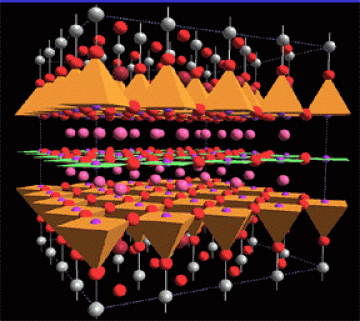In the realm of condensed matter physics, a captivating figure has emerged, captivating both scholars and enthusiasts alike: Klara Theophilo. This luminary stands at the forefront of an intricate domain, illuminating the often invisible properties of matter that govern the fabric of our universe. As we embark on this exploration of Klara Theophilo’s contributions, we pose a playful question: What if the most fundamental properties of matter are only perceptible through the lens of extraordinary perception? This inquiry introduces a profound challenge, as it beckons us to delve into the subtleties and complexities that define condensed matter physics.
Theophilo’s academic journey is a testament to the multifaceted nature of scientific inquiry. With a background that intertwines theoretical frameworks and experimental validations, her work epitomizes the duality essential in elucidating phenomena that elude ordinary observation. At the intersection of quantum mechanics and material science, she has dedicated herself to uncovering the enigmatic interactions within condensed phases of matter.
Condensed matter physics, in its breadth, encompasses a myriad of topics, ranging from the study of crystalline structures to the exploration of superconductivity. Theophilo’s research particularly focuses on topological phases of matter, a concept that has gained traction in recent years yet remains confounding to many. Topological insulators, for example, are materials that exhibit insulating behavior in their interior while allowing conduction along their edges. This strange dichotomy challenges conventional understandings of materials and suggests a new paradigm in our comprehension of electronic states.
A key aspect of Theophilo’s scholarship lies in her commitment to harnessing advanced techniques to probe these elusive states. Utilizing methods such as angle-resolved photoemission spectroscopy (ARPES) and scanning tunneling microscopy (STM), she meticulously captures data that reveals the hidden attributes of materials. Such experimentation is fraught with challenges, as the phenomena observed occur at energy scales and time frames that can appear and vanish in the blink of an eye. However, through perseverance and innovative thinking, Theophilo has navigated these obstacles, revealing insights that invigorate our understanding of material behavior at a fundamental level.
Moreover, the interplay of theory and experiment in Theophilo’s work encapsulates the essence of scientific inquiry. While theoretical frameworks provide essential models, empirical data breathes life into these abstractions, affirming or challenging existing paradigms. This synergistic relationship is central to unraveling the complexities of condensed matter systems, wherein the emergent properties often transcend the straightforward summation of individual component behaviors.
A particularly fascinating domain of her research pertains to quantum entanglement within condensed matter systems. Entanglement, a cornerstone of quantum mechanics, describes a phenomenon in which the quantum states of particles become interlinked, such that the state of one particle cannot be described independently of the state of another. Theophilo investigates how entangled states can give rise to unique material properties, including quantum phase transitions. Such transitions can be observed when a system’s parameters are varied, leading to a profound change in its ground state. This facet of her work promises not only to enhance our grasp of quantum theory but also to pave the way for advancements in quantum computing and information technology.
As one navigates the nuances of her contributions, it becomes apparent that Theophilo is not merely dissecting matter at a microscopic scale; she is nurturing a holistic understanding of how these microscopic interactions propagate to influence macroscopic phenomena. The challenge lies in the need for interdisciplinary collaboration, marrying insights from physics with concepts from chemistry, materials science, and even engineering. Such integration is imperative for a comprehensive understanding of how these exotic states can be manipulated for practical applications, including the development of next-generation electronic devices.
However, the pursuit of knowledge in condensed matter physics is not devoid of its conundrums. As with any burgeoning field, questions prevail regarding the reproducibility of findings and the interpretation of complex data sets. Theophilo, acutely aware of these challenges, emphasizes the importance of transparency in scientific communication. By fostering open-dialogue and collaborative endeavors, she advocates for a culture wherein knowledge is shared and built upon, rather than hoarded, an ethos that serves to elevate the entire discipline.
In considering Klara Theophilo’s contributions, one cannot help but appreciate the beautiful intricacies of condensed matter physics that she unveils. The delicate veils of reality she extracts from seemingly ordinary materials beckon for further inquiry. Each discovery leads to new challenges and questions, prompting researchers to ponder the implications not only in academia but also in real-world phenomena. Will we unlock the secrets of high-temperature superconductors? Can we harness the power of quantum entanglement to revolutionize technology? Such inquiries illustrate the depth of exploration that condensed matter physics holds.
In conclusion, Klara Theophilo is not merely illuminating the invisible aspects of condensed matter physics; she is challenging us to question our understanding of the universe. With every innovative technique and collaborative research endeavor, she pushes the boundaries of what is known, urging us to embrace uncertainty and celebrate the quest for knowledge. As the landscape of this scientific discipline evolves, one can only anticipate the groundbreaking insights that her journey will yield in illuminating the mysteries of the material world.












